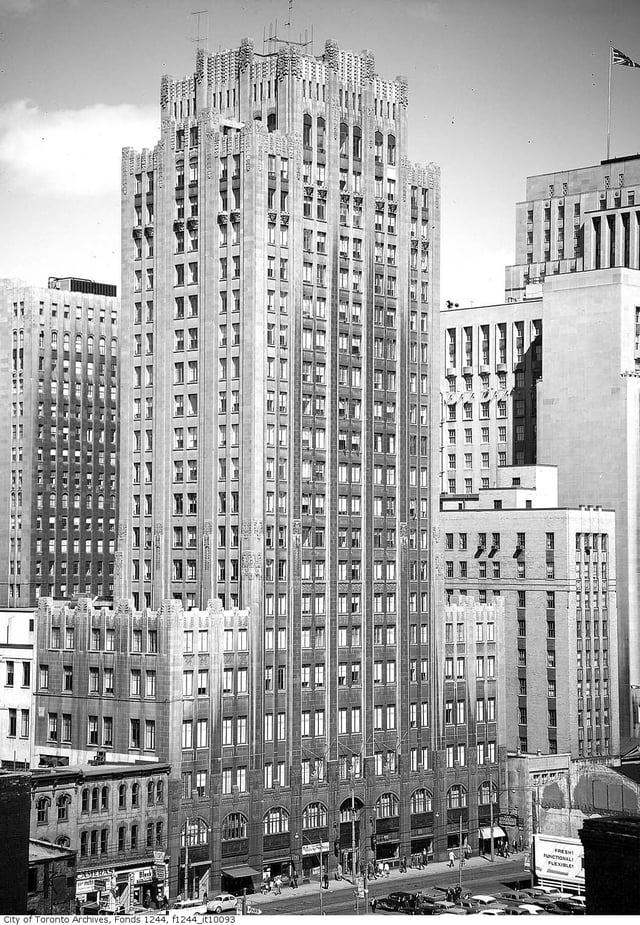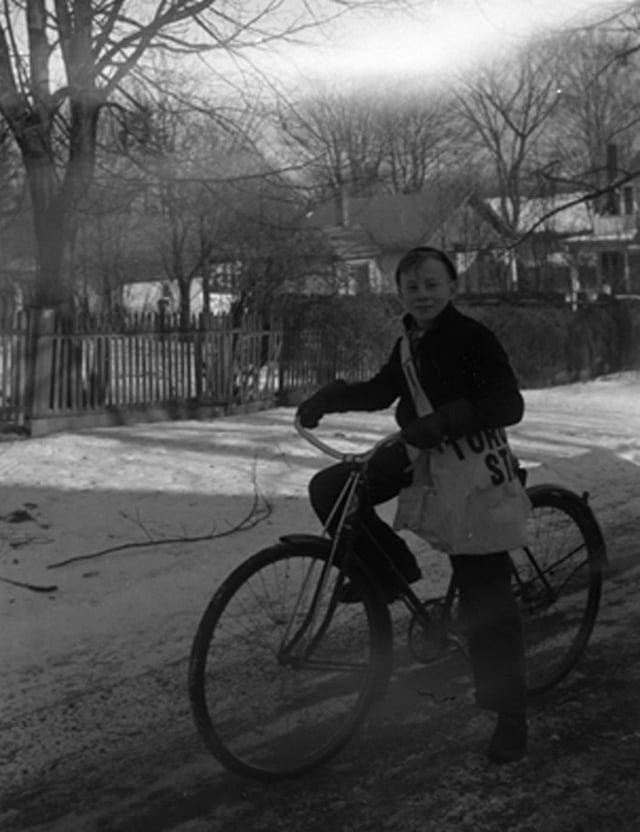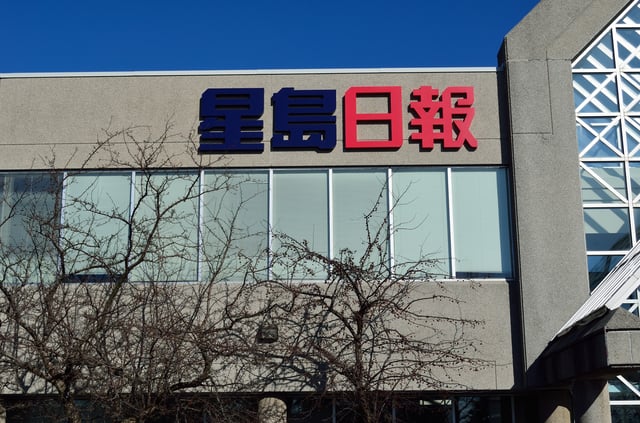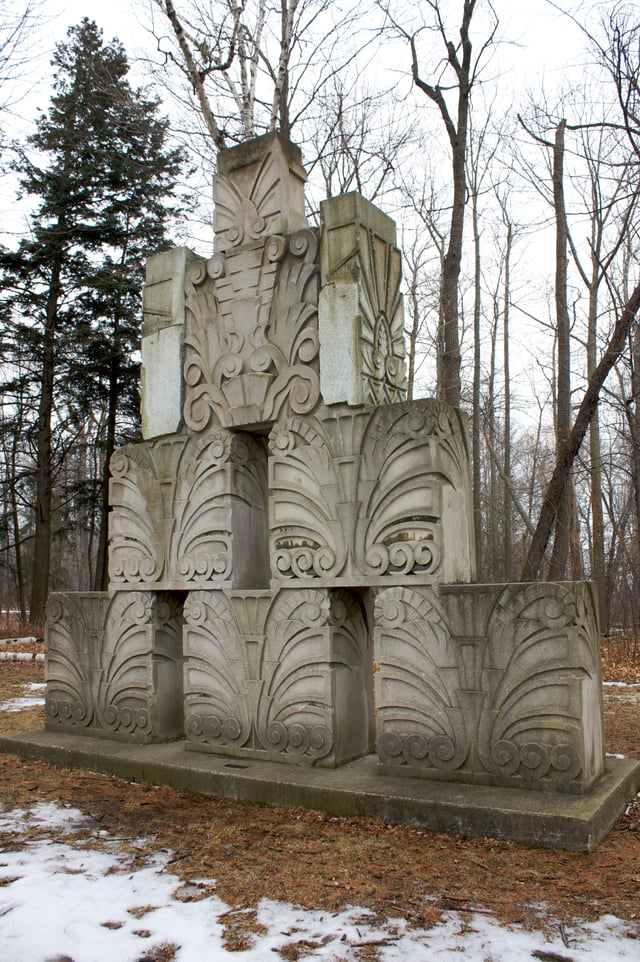Toronto Star

Toronto Star

| Type | Daily newspaper |
|---|---|
| Format | Broadsheet |
| Owner(s) | Toronto Star Newspapers Ltd. (subsidiary ofTorstar) |
| Publisher | John Boynton |
| Editor | Irene Gentle |
| Founded | 1892(as Evening Star) |
| Political alignment | Social liberalism[5][6][7][8] |
| Headquarters | 1 Yonge StreetToronto,OntarioM5E 1E6 |
| Circulation | 308,881 weekdays 419,236 Saturdays 267,697 Sundays in 2015[9] |
| Sister newspapers | StarMetro |
| ISSN | 0319-0781[97] |
| OCLCnumber | 137342540[98] |
| Website |
The Toronto Star is a Canadian broadsheet daily newspaper. Based on 2015 statistics, it is Canada's highest-circulation newspaper on overall weekly circulation;[10] although it is a close second to The Globe and Mail in daily circulation on weekdays, it overtakes the Globe in weekly circulation because the Globe does not publish a Sunday edition.[11] The Toronto Star is owned by Toronto Star Newspapers Limited, a subsidiary of Torstar Corporation and part of Torstar's Daily News Brands division.[12]
| Type | Daily newspaper |
|---|---|
| Format | Broadsheet |
| Owner(s) | Toronto Star Newspapers Ltd. (subsidiary ofTorstar) |
| Publisher | John Boynton |
| Editor | Irene Gentle |
| Founded | 1892(as Evening Star) |
| Political alignment | Social liberalism[5][6][7][8] |
| Headquarters | 1 Yonge StreetToronto,OntarioM5E 1E6 |
| Circulation | 308,881 weekdays 419,236 Saturdays 267,697 Sundays in 2015[9] |
| Sister newspapers | StarMetro |
| ISSN | 0319-0781[97] |
| OCLCnumber | 137342540[98] |
| Website |
History
Formation
The Star (originally known as the Evening Star and then the Toronto Daily Star) was created in 1892[14] by striking Toronto News printers and writers, led by future Mayor of Toronto and social reformer Horatio Clarence Hocken, who became the newspaper's founder,[15] along with another future mayor, Jimmy Simpson.
The Star was first printed on Toronto World presses, and at its formation, The World owned a 51% interest in it[16] as a silent partner.[17] That arrangement only lasted for two months, during which time it was rumoured that William Findlay "Billy" Maclean, The World's proprietor, was considering selling the Star to the Riordon family.[1] After an extensive fundraising campaign among the Star staff, Maclean agreed to sell his interest to Hocken.[17][19]
The paper did poorly in its first few years.
Hocken sold out within the year, and several owners followed in succession until railway entrepreneur William Mackenzie bought it in 1896.[20] Its new editors, Edmund E. Sheppard and Frederic Thomas Nicholls, moved the entire Star operation into the same building used by the magazine Saturday Night.[21] This would continue until Joseph E. "Holy Joe" Atkinson, backed by funds raised by supporters of Prime Minister Wilfrid Laurier, bought the paper.[21] The supporters included Senator George Cox, William Mulock, Peter Charles Larkin and Timothy Eaton.[22]
Atkinson's influence

Joseph E. Atkinson, c. 1910s
Atkinson was the Star's editor from 1899 until his death in 1948. The newspaper's early opposition and criticism of the Nazi regime[23] saw it become one of the first North American papers to be banned in Germany.[24]
Atkinson had a social conscience.
He championed many causes that would come to be associated with the modern welfare state: old age pensions, unemployment insurance, and health care. The Government of Canada Digital Collections website describes Atkinson as
a "radical" in the best sense of that term....
The Star was unique among North American newspapers in its consistent, ongoing advocacy of the interests of ordinary people. The friendship of Atkinson, the publisher, with Mackenzie King, the prime minister, was a major influence on the development of Canadian social policy.[25]
Atkinson became the controlling shareholder of the Star. The Star was frequently criticized for practising the yellow journalism of its era. For decades, the paper included heavy doses of crime and sensationalism, along with advocating social change. From 1910 to 1973, the Star published a weekend supplement, the Star Weekly
Shortly before his death in 1948, Joseph E. Atkinson transferred ownership of the paper to a charitable organization given the mandate of continuing the paper's liberal tradition.[26] In 1949, the Province of Ontario passed the Charitable Gifts Act,[2] barring charitable organizations from owning large parts of profit-making businesses,[27] that effectively required the Star to be sold.[3]
Atkinson's will had directed that profits from the paper's operations were "for the promotion and maintenance of social, scientific and economic reforms which are charitable in nature, for the benefit of the people of the province of Ontario" and it stipulated that the paper could be sold only to people who shared his social views.[29] The five trustees of the charitable organization circumvented the Act by buying the paper themselves and swearing before the Supreme Court of Ontario to continue what became known as the "Atkinson Principles":[30]
A strong, united and independent Canada
Social justice
Individual and civil liberties
Community and civic engagement
The rights of working people
The necessary role of government
Besides, we are the Star which means we all have the Atkinson Principles—and its multi-culti values—tattooed on our butts. Fine with me. At least we are upfront about our values, and they almost always work in favour of building a better Canada.[32]
Involvement with broadcasting

The Old Toronto Star Building, 80 King St West, in 1961[33]
From 1922 to 1933, the Star was also a radio broadcaster on its station CFCA, broadcasting on a wavelength of 400 metres (749.48 kHz), whose coverage was complementary to the paper's reporting.[34] The station was closed following the establishment of the Canadian Radio Broadcasting Commission and the introduction of a government policy that, in essence, restricted private stations to an effective radiated power of 100 watts.[34] The Star would continue to supply sponsored content to the CRBC's CRCT station (which later became CBC station CBL), an arrangement that lasted until 1946.[34]
1970s to present
In 1971, the newspaper was renamed the Toronto Star and moved to a modern office tower at One Yonge Street by Queens Quay. The original Star building at 80 King Street West was demolished to make room for First Canadian Place. The new building originally housed the paper's presses. In 1992, the printing plant was moved to the Toronto Star Press Centre at the Highway 407 & 400 interchange in Vaughan.[35] In September 2002, the logo was changed, and "The" was dropped from the papers. During the 2003 Northeast blackout, the Star printed the paper at a press in Welland, Ontario.
Until the mid-2000s, the front page of the Toronto Star had no third-party advertising aside from upcoming lottery jackpot estimates from the Ontario Lottery and Gaming Corporation (OLG).
On May 28, 2007, the Star unveiled a redesigned paper that features larger type, narrower pages, fewer and shorter articles, renamed sections, more prominence to local news, and less so to international news, columnists, and opinion pieces.[36] However, on January 1, 2009, the Star reverted to its previous format. Star P.M., a free newspaper in PDF format that could be downloaded from the newspaper's website each weekday afternoon, was discontinued in October 2007, thirteen months after its launch.
On January 15, 2016, Torstar confirmed the closure of its Vaughan printing presses and that it will outsource printing to Transcontinental Printing, leading to the layoff of all 285 staff at the plant as Transcontinental has its own existing facility, also in Vaughan.[37]
The Star brand
Editorial position
Like its competitor The Globe and Mail, the Star covers "a spectrum of opinion that is best described as urban and Central Canadian" in character. The Star is generally centrist and centre-left, and is more socially liberal than The Globe and Mail.[44] The paper has aligned itself over the years with the progressive "Atkinson principles" named for publisher Joseph E. Atkinson,[45] who was editor and publisher of the paper for 50 years.[46] These principles included social justice and social welfare provision, as well as individual rights and civil liberties.[46] In 1984, scholar Wilfred H. Kesterton described the Star as "perpetually indignant" because of its social consciousness.[44]Us%2C%20Them%20and%20Others%3A%20Pluralism%20and%20N]]When Atkinson's son Joseph Story Atkinson became president of the e Star has been a champion of social and economic reform, a defender of minority rights, a foe of discrimination, a friend of organized labour and a staunch advocate of Canadian nationhood."[46]
Another of the "Atkinson principles" has been a "strong, united and independent Canada"; in a 1927 editorial, the paper wrote "We believe in the British connection as much as anybody does but on a self-respecting basis of equality, of citizenship, and not on the old basis of one country belonging to the other."[46] The paper was historically wary of American influence,[46] and during the debates over the North American Free Trade Agreement, the paper was frequently critical of free trade and expressed concerns about Canadian sovereignty.[47] The paper has been traditionally supportive of official bilingualism and maintaining Canadian unity in opposition to Quebec separatism.[46]
In the 1980s, Michael Farber wrote in the Montreal Gazette that the Star's coverage was Toronto-centric to the point that any story was said to carry an explanation as to "What it means to Metro."[48] Conversely, Canadian sociologist Elke Winter wrote in 2011 that the Toronto Star was less "Toronto-centric" than its rival, The Globe and Mail, writing that the Star "consciously reports for and from Canada's most multicultural city" and catered to a diverse readership.[44]
Election endorsements
Elections in which the Star did not endorse the Liberals took place in 1972 and 1974, (when it endorsed the Progressive Conservatives), and 1979 and 2011 (when it endorsed the NDP).[49][45] In the 2011 election in which the Star endorsed the NDP under Jack Layton,[5] but to avoid vote-splitting that could inadvertently help the Conservatives under Stephen Harper, which it saw as the worst outcome for the country, the paper also recommended Canadians vote strategically by voting for "the progressive candidate best placed to win" in certain ridings.[51] For the 2015 election, the Star endorsed the Liberal Party under Justin Trudeau.[52]
Features

Toronto Star paperboy in Whitby in 1940
Other notable features include:
an in-depth world news section called "World Weekly" on Saturdays (this section is only available to residential subscriptions without any additional payment and the section contains no advertisements)
optional supplements on Saturday and Sunday include Starweek (television listings and episode summaries), abridged version of The New York Times international section, New York Times Crosswords, editorials, and book reviews). Starweek and The New York Times supplements require separate additional payment)
The Star states that it favours an inclusive, "big tent" approach, not wishing to attract one group of readers at the expense of others. It publishes special sections for Chinese New Year and Gay Pride Week, along with regular features on real estate (including condominiums), individual neighbourhoods (and street name etymologies), shopping, cooking, dining, alcoholic beverages (right down to having an exclusive on the anti-competitive practices of the Beer Store that led to major reforms on the sale of alcohol in Ontario grocery stores in 2015 by Premier Kathleen Wynne and Ed Clark), automobiles (as Wheels), and travel destinations.
Since the mid-2010s, the sports and business sections are consolidated on some days and eventually, all weekdays.
Competitive position
Current developments
Sing Tao Daily

Sing Tao Daily editorial office in Markham, Ontario[59]
Paywall
In October 2012, the Star announced its intention to implement a paywall on its website, thestar.com,[63] which was made effective on August 13, 2013. Readers with daily home delivery had free access to all its digital content. Those without a digital subscription can view up to ten articles a month.[64][65] The paywall does not apply to its sister sites, such as wheels.ca (automotive news and classifieds) or Workopolis (career search). However, during late 2013, the Star announced that it would end its paywall, which it did on April 1, 2015.[66]
In June 2018, the Star announced it was implementing a paywall again and has the same restrictions as its previous paywall implementation.[67]
Star Touch tablet app
On September 15, 2015, the Toronto Star released the Toronto Star Touch tablet app, which was a free interactive news app with interactive advertisements. It was discontinued in 2017. At launch, it was only available for the iPad, which uses iOS. Based on a similar app for Montreal-based La Presse released in 2013, Star Touch is the first such app for any English-language news organization, quality-wise.[68] In slightly over 50 days since launch, the app had reached the 100,000-download milestone.[69] The Android version was launched on December 1, 2015.[70] The iOS version is rated 12+ by Apple's App Store guidelines[71] and the Android version is rated Mature 17+ by the Entertainment Software Rating Board (ESRB).[72]
Closing of printing plants
On January 15, 2016, the Toronto Star announced it would close its printing plant in Vaughan and outsource all print production starting in July 2016. The newspaper said the closure was effected, so it could better focus on its digital outlets.[73]
Circulation
The Toronto Star has seen, like most Canadian daily newspapers, a decline in circulation. Its total circulation dropped by 22 percent to 318,763 copies daily from 2009 to 2015.[74]
Internship program shelved
Notable Star personalities (past and present)
Publishers
Joseph E. Atkinson (1899–1948)
Joseph S. Atkinson (1948–1966)
Beland Honderich (1966–1988)
David R. Jolley (1988–1994)
John Honderich (1995–2004)
Michael Goldbloom (2004–2006)
Jagoda Pike (2006–2008)
Donald Babick (2008)
John Cruickshank (2009–2016)
John Boynton (2017–present)
Presidents and CEOs of Torstar
Beland Honderich 1966–1988 (as President), 1976–1988 (as CEO and Chair)
David R. Jolley 1988–1994
David A. Galloway 1988–2002
J. Robert S. Prichard 2002–2009
David P. Holland 2009–2017
John Boynton 2017–present
Journalists and columnists
Pierre Berton
Tony Burman
Morley Callaghan
June Callwood
Greg Clark
Jeremy Clarkson
Daniel Dale
Susan Delacourt
Rosie DiManno
Robyn Doolittle
Milt Dunnell
Joe Fiorito
Graham Fraser
Michael Geist
Carol Goar
Alison Gordon
Richard Gwyn
Matthew Halton
Tom Harpur
Chantal Hébert
Ernest Hemingway[78]
Cathal Kelly
Marc and Craig Kielburger
Naomi Klein
Faisal Kutty
Michele Landsberg
Gary Lautens
Duncan Macpherson
Linda McQuaig
Earl McRae
Heather Mallick
Lou Marsh
Peter C. Newman
Cleo Paskal
Angelo Persichilli[81]
Ellen Roseman
Robert Service
Haroon Siddiqui
Gordon Sinclair
Randy Starkman
Walter Stewart
Tanya Talaga
Charles Templeton
Ellie Tesher
James Travers
Thomas Walkom
Claire Wallace
Antonia Zerbisias
Cartoonists
Walter Ball
Sid Barron
Jimmy Frise
Duncan Macpherson
Dušan Petričić
Ben Wicks
Office locations of the Toronto Star
The Toronto Star has been located at several addresses from 1892 to 1970.[84]
1892: 83 Yonge Street (shared with The Toronto World
1896: 26–28 Adelaide Street West
1905: 18–20 King Street West
1929: 80 King Street West (Old Toronto Star Building)
1970: One Yonge Street
See also
Grant v Torstar Corp
Metroland Media Group – Largest division of company
Timeline of Rob Ford video scandal (as the Toronto Star played a major role in uncovering the scandal, along with other media)
ShopTV Canada (a Torstar-operated infomercial channel defunct since November 2013)
